#Particle Simulation
Text
Space goop Experiments
There are going to be a lot of technical challenges with this project, so I'm tackling a few of them now to make the animation process less laborious later. Up first is the titular jar of cosmos, or more specifically the viscous, galaxy-colored liquid therein. I was able to get what I needed from Blender's fluid sim for the liquid space, but not so much the stars. My first pass with materials came out a little janky:
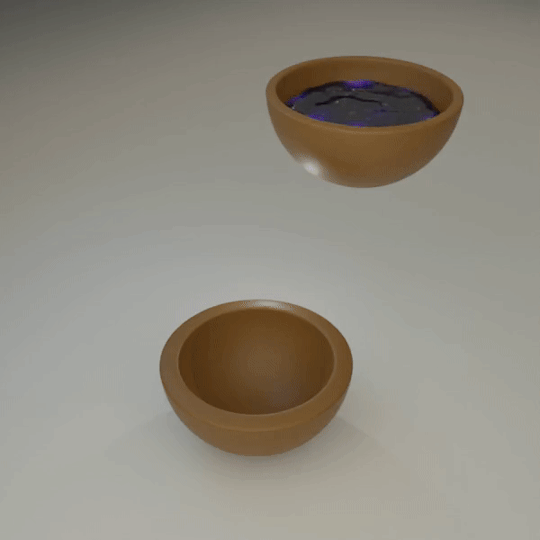
Then I tried assigning an emissive material to the fluid particles, and got this odd (but twinkly!) result:
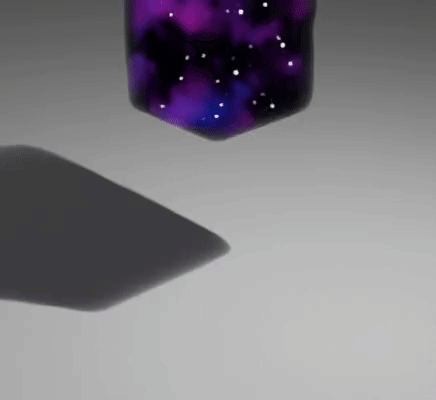
Unfortunately, I can't control that twinkling. I believe it has to do with blender recalculating the fluid sim particles every frame, and hence messing up my Random output from the Particle Info node >:( Here are a couple simulations I tried (the red particles would show up as stars):

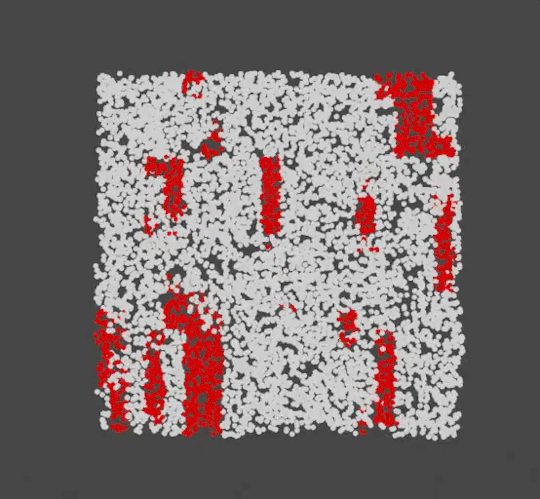

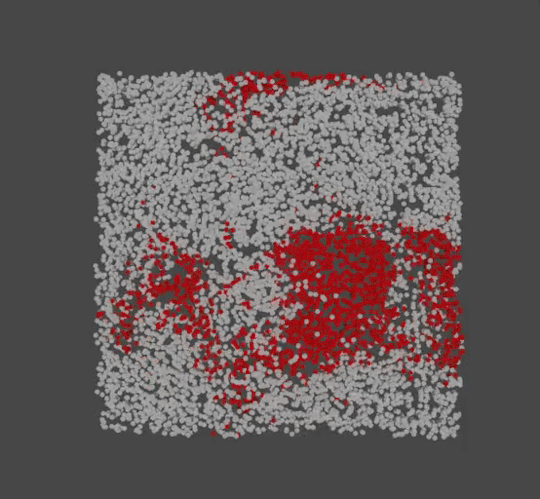
All of these look cool in their own way, but none approximate a star field. For now, I managed to get passible material stars, but more than likely I will either jerry-rig something through compositing or figure out how to combine the fluid sim with a separate particle system so the stars look like they're coming from inside the space goop.
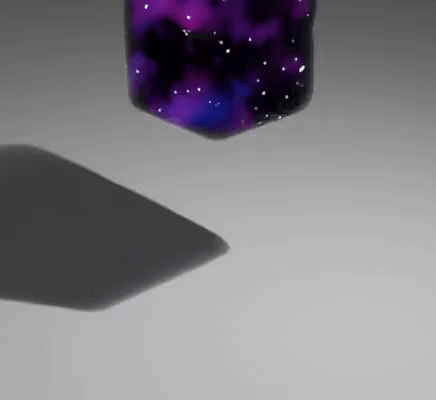
#Digital Art#Space Material#Galaxy Colors#Fluid Simulation#Fluid Particles#Emissive Stars#Material Experimentation#Blender Art#Fluid Art#Galactic Effect#Creative Process#Art Tech#Digital Craft#Texture Experiment#Liquid Space#Particle Simulation#Emissive Art#Experimental Art#Tumblr Art#Art Tech Experiment#Space Inspired#Artistic Creation#Fluid Dynamics#Visual Experiment#Art Discovery#Creative Journey#Blender Magic#Artistic Innovation#Galaxy Art#Space Craft
0 notes
Text
A swarm of boids!
1 note
·
View note
Text

Eclipse.
#gif#gif art#eclipse#solar eclipse#sun#moon#art#artists on tumblr#pi-slices#animation#loop#abstract#design#touchdesigner#realtime#particles#simulation#generative#visuals#aesthetic#trippy
2K notes
·
View notes
Text
(particle) physics dashboard simulator

professional-ton follow reblogged 🔄 particl...
➕ professional-ton follow
big L when the top doesn't even last long enough to couple with a bottom
🪦 massivest-quark-deactivated51025
SCATTER YOU AND YOUR DECAYONISM!!! I HOPE YOU'LL NEVER FIND A STABLE NUCLEUS AND MAY THE β-DECAY GET YOU!
➕ professional-ton follow
'never start an argument you know you'll never be able to finish in your lifetime'
- Albert Einstein
#the comment section is full of these freaks #looks like a graveyard in there #at least there's no need for blocking with these types
(22,045 notes)

🏋️♂️ giga-chad-particle follow
pussy so good you tunnel right through that coulomb potential
(43 notes)

giga-chad-particle follow reblogged 🔄 neutr...
🟢 neutrinonionionio follow
for someone that can be stopped by a sheet of paper alpha particles are surprisingly full of themsleves
🏋️♂️ giga-chad-particle follow
at least im not some fucking WIMP
🟢 neutrinonionionio follow
you do realize that WIMP stands for Weakly Interacting Massive Particle? there isn't even proof they exist. And while im not very massive at all you are a massive buffoon
🏋️♂️ giga-chad-particle follow
yuor still fucking WEAK
(578 notes)

📶 scatter-couple-kill follow
They're the cryptids of the particle world and you loved them so much we're bringing them back in a new format! So let's radiate...
#poll #who'd you rather scatter on #scatter couple kill #we'll be back to our usual bullshit soon
(9,084 notes)

physics-strongest-soldier follow reblogged 🔄 e...
⚡ electron-shmelectron follow
i'm sick of this gluonormativity! electromagnetic, weak and gravitational interaction are just as important as strong interaction!!!
⚛️ atomatic-jesus follow
you are right and you should say it
➿ physics-strongest-soldier follow
colour me impressed! an electron all on it's own, how cute... but now go back to your sugardaddy @atomatic-jesus before you hurt yourself okay?
also, gravitational interaction? really? this would be hilarious if it wasn't so pathetic.
⚡ electron-shmelectron follow
gravitational interaction holds whole galaxies with planets and stars together! maybe you should inform yourself before you go around annoying people
➿ physics-strongest-soldier follow
omp you're one of those freaks. i cant believe theres still particles out there that believe in something bigger than us. bet you also believe that we all can work together to form some sort of "organism".
honey, you're view of reality is so cracked, maybe you should put some gluon
#thought i had all of those freaks blocked #but im kinda proud of that pun ngl #freaks dni
(129,506 notes)

❌ contron follow
so if proton = pro + ton and neutron = neutral + ton shouldn't the electron actually be called contron?
#polarising ideas by me #contron #electron #proton #neutron
(3 notes)

🌈 wollaston1802 follow
hello 👋 im a bound electron ⚡ looking for a radiant photon ☄️ to excite me 🤭. i prefer a length 📏 of 656.278 nm ♥️, 486.132 nm 🩵 or 434.045 nm 💙 (some of you in the violets and ultraviolets may also do it but please no less than 364.56 nm, last time my sugar daddy got ionized they almost didn't take me back). you can find me in the L-shell 🐚 of the 5,000,000,205th H-atom ⚛️ to your left.
#balmer series #very excitable #find me 😘
(113 notes)

⬇️ a-real-downer follow
some of you really need to reconsider your word choices. using 'positive' to describe good things and 'negative' to describe bad things is sooo plum pudding model times. as someone with negative charge of -1/3e myself i refuse to accept such every-day discrimination manifested in our speech pattern
#actually negative #down quark #negatively charged particles unite!
(73 notes)

photon-with-more-than-211-mev follow reblogged...
🪦 special-relativity-my-love-deactivated2024
thank physics that there are no anti-muons in my vicinity im not ready to meet my antiparticle yet
🪦ordinary-nonrelativity-my-hate-deactivated2024
hi :)
〰️ photon-with-more-than-211-mev (new) follow
*waves at you*
#gotta love pair annihilation
(1.6 Mio notes)

🌀 double-u-double-fun follow
🎶i'm a WEAK interaction FREAK🎶
#this song just rules #everybody should listen to it #bosonic vibrations #check them out #they're great
#this probably has the target audience of like one physicist but im gonna post it anyway and hope it finds them#i may explain the jokes if they arent understandable#physics#particle physics#tumblr dashboard simulator#my post
31 notes
·
View notes
Photo
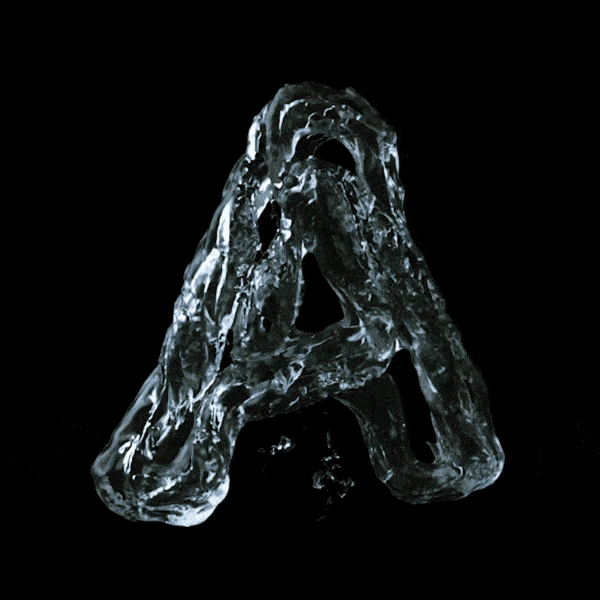
Monthly
#A#render#houdini#animated#simulated#karma#cpu#xpu#liquid#flow#path#particles#water#motion graphics#black#ritch#loop
87 notes
·
View notes
Text
⚡️ TAEVision Engineering - Moment - May 11, 2024
⚡️ TAEVision Engineering - Moment - May 11, 2024
3D Mechanical Design Applications - Automotive BMW "aus Freude am Fahren" BMW Bayerische Motoren Werke ... BMW 540i 6-Speed 2000 ... E39 5-Series - M62 V8 [Front] ... Mediterranean Blue Metallic ... Particle-Based Fluid Simulation ... SPH Smooth Particle Hydrodynamics
▸ TAEVision Engineering on Tumblr
▸ TAEVision Engineering on Flipboard

TAEVision Moment on Tumblr - Data 598 - May 11, 2024
#TAEVision#engineering#3d#mechanical design#automotive#BMW#540i#BMW 540i#E39#BMW 5-Series#M62 V8#Mediterranean Blue Metallic#Particle-Based Fluid Simulation#SPH Smooth Particle Hydrodynamics
2 notes
·
View notes
Text
Express Ideas via Dynamic Simulations
5 notes
·
View notes
Text
Particle Dreams, 1988 by Karl Sims
#video#old cgi#80s#1980s#This short computer animation from 1988 contains a collection of dream sequences created using 3D particle systems techniques. Behavior rul#a snowstorm#a tumultuous head#and a waterfall. A Connection Machine CM-2 computer was used to perform physical simulations on thousands of particles simultaneously#one processor for each particle.#dreamcore#vaporwave#cgi
3 notes
·
View notes
Text
Particle acceleration.
Do atheists exclaim 'Oh particle acceleration!' when they reproduce?
-Phelo and Ginger
#science#yandere simulator#yandere dev is gross#yandere#atheism#exclamation#particles#particle acceleration#yandere sim#yandere sim art#yandere sim gameplay#gaming#funny#meme#dank memes#ginger doesn't know how to tag things#lmaooo
4 notes
·
View notes
Video
FF/X - Sliding into (wet) darkness
FF/A
www.francescofoglietti.it
11 notes
·
View notes
Video
Colourful animals hunting invisible food
3 notes
·
View notes
Text
Light Trails.
#art#artists on tumblr#design#pi-slices#animation#abstract#black and white#trippy#loop#3d#c4d#octane#surreal#light trails#glow#particles#simulation
507 notes
·
View notes
Note
What... does the kill function do
it uh *adjusts glasses* determines when particles (???) disappear
also love its parameter chart

2 notes
·
View notes
Text
The Importance of Discrete Element Modeling (DEM) Studies and What Problems It Can Solve
In today's rapidly advancing world of science and engineering, the need for accurate and efficient simulation tools has never been greater. One such tool that has gained significant prominence in recent years is Discrete Element Modeling (DEM). DEM is a numerical technique used to simulate the behavior of granular materials, such as powders, grains, and particles, on a microscale level. This modeling approach has proven to be invaluable in a wide range of industries, from pharmaceuticals to civil engineering. In this article, we will explore the importance of DEM studies and delve into the various problems it can solve, demonstrating its versatility and impact across diverse fields.
I. Understanding Discrete Element Modeling (DEM)
Before we dive into the importance of DEM studies, it's essential to grasp the fundamentals of Discrete Element Modeling itself. DEM is a computational technique that simulates the behavior of a large number of individual particles. Each particle is treated as a discrete entity and follows specific rules and interactions with other particles. These interactions are governed by various force laws, including contact forces, friction, and collision dynamics. By tracking the motion and interactions of these particles over time, DEM can provide valuable insights into the behavior of granular materials.
DEM Fundamentals
At the core of DEM lies the discrete nature of particles. Unlike continuum-based methods, DEM models materials as a collection of individual particles, each with its own properties and interactions. These particles move within a virtual space and collide with one another, creating complex dynamics that mirror real-world granular materials.
The essential components of a DEM simulation include:
Particles: These represent the individual grains or particles within the material.
Interactions: DEM defines the rules governing how particles interact with each other, including contact forces, friction, and restitution coefficients.
Time Integration: DEM calculates the motion of particles over discrete time steps, accounting for forces and interactions at each step.
Boundaries and Constraints: The simulation environment often includes boundaries and constraints to model specific scenarios accurately.
DEM Applications
The versatility of DEM has led to its adoption in various fields and industries. Some notable applications of DEM include:
Geotechnical Engineering: DEM is used to study soil mechanics, soil-structure interactions, and landslide prediction.
Pharmaceutical Manufacturing: DEM helps optimize drug formulation, tablet compression, and powder flow in pharmaceutical processes.
Mining and Minerals Processing: DEM is employed to understand the behavior of ore materials during crushing, grinding, and transport.
Food Processing: DEM studies can improve the design of food processing equipment and optimize the handling of food particles.
Civil Engineering: DEM is applied to simulate granular materials in construction, such as concrete mixing and soil compaction.
Powder Technology: In industries like powder metallurgy and ceramics, DEM assists in optimizing powder compaction and sintering processes.
Now that we have a fundamental understanding of DEM, let's explore the significance of DEM studies and the diverse range of problems it can solve across these industries.
II. The Importance of DEM Studies
DEM studies have become increasingly important in various fields, offering valuable insights, solutions, and advancements. Here, we will delve into the significance of DEM studies by examining the critical problems it addresses across industries.
Geotechnical Engineering
a. Soil Mechanics
In geotechnical engineering, understanding the behavior of soils is paramount for infrastructure design and construction. DEM studies provide insights into soil mechanics by simulating the interaction between soil particles under various loading conditions. This allows engineers to predict soil settlement, shear strength, and bearing capacity, all of which are crucial for designing stable foundations for buildings, bridges, and other structures.
b. Landslide Prediction
Landslides pose a significant threat in hilly and mountainous regions. DEM can simulate the movement of soil and rocks on slopes, aiding in landslide prediction and risk assessment. By analyzing factors like particle size, shape, and cohesion, DEM models can help identify areas prone to landslides and develop mitigation strategies.
Pharmaceutical Manufacturing
a. Tablet Compression
In the pharmaceutical industry, tablet compression is a critical process in drug manufacturing. DEM studies help optimize tablet formulation by simulating the compaction of powder blends. By varying particle properties and compaction conditions, researchers can predict tablet properties like hardness, friability, and dissolution rate, leading to improved drug formulations and reduced development costs.
b. Powder Flow and Mixing
Powder flow and mixing are crucial steps in pharmaceutical manufacturing. DEM models can simulate the flow of powders through equipment like hoppers, silos, and blenders. This enables the identification of potential flow problems, such as segregation or arching, and the design of equipment modifications to enhance powder handling and mixing efficiency.
Mining and Minerals Processing
a. Crushing and Grinding
In mining and minerals processing, the efficient comminution of ore materials is essential for resource extraction. DEM studies simulate the crushing and grinding of ore particles in crushers and mills, allowing engineers to optimize equipment design and operating conditions. This leads to improved energy efficiency and increased mineral recovery rates.
b. Material Handling
The transport of bulk materials within mining and processing facilities can be challenging. DEM helps analyze conveyor belt behavior, chute design, and transfer point performance. By studying particle trajectories and interaction forces, engineers can minimize material spillage, dust generation, and equipment wear, ultimately reducing operational costs.
Food Processing
a. Mixing and Blending
In the food processing industry, achieving uniform mixing and blending of ingredients is critical for product quality. DEM simulations of mixing processes help optimize equipment design and operating parameters. By visualizing particle distribution and movement, manufacturers can ensure consistent product quality and reduce waste.
b. Powder Handling
Powder handling in the food industry can be complex due to the diverse properties of food powders. DEM studies assist in designing equipment such as pneumatic conveyors and feeders. By predicting powder flow behavior and potential issues like segregation, DEM helps ensure the efficient and hygienic handling of food ingredients.
Civil Engineering
a. Concrete Mixing and Placement
In civil engineering, the proper mixing and placement of concrete are essential for constructing durable structures. DEM can model the behavior of concrete constituents, such as aggregates and cement particles, during mixing and placement processes. This allows engineers to optimize concrete mix designs and construction techniques, leading to improved performance and longevity of concrete structures.
b. Soil Compaction
Achieving adequate soil compaction is crucial for road construction, embankment construction, and foundation preparation. DEM simulations can replicate the compaction process, considering factors like soil particle properties, compactor geometry, and dynamic loading. Engineers can use DEM to optimize compaction equipment and procedures, ensuring the desired level of soil compaction is achieved.
III. Challenges and Advances in DEM Studies
While DEM has proven to be a valuable tool in addressing various problems, it is not without its challenges and limitations. Researchers continue to work on improving DEM techniques and expanding their capabilities. Let's explore some of the challenges and recent advances in DEM studies:
Computational Intensity
DEM simulations involving a large number of particles can be computationally intensive and time-consuming. To address this challenge, researchers have developed parallel algorithms and utilized high-performance computing clusters to accelerate simulations. Additionally, advancements in graphics processing units (GPUs) have significantly improved the efficiency of DEM simulations.
Particle-Particle Interactions
Accurately modeling complex particle-particle interactions, including adhesive forces and agglomeration, remains a challenge in DEM. Recent research has focused on refining contact models to better capture these interactions, allowing for more realistic simulations of cohesive and adhesive materials.
Scale-Up and Scale-Down
Scaling DEM simulations from laboratory-scale experiments to real-world applications can be challenging due to differences in length and time scales. Researchers are developing multiscale modeling approaches to bridge this gap, enabling more accurate predictions in practical engineering applications.
Integration with Other Simulation Techniques
In some cases, it is necessary to combine DEM with other simulation techniques, such as Computational Fluid Dynamics (CFD) or Finite Element Analysis (FEA), to study complex multiphysics problems. Integrating DEM with these techniques and developing robust coupling methods are active areas of research.
Calibration and Validation
Calibrating DEM models to match real-world behavior and validating simulations against experimental data are crucial for model accuracy. Researchers are developing techniques for parameter calibration and validation, including advanced imaging and tracking technologies for particle characterization.
GPU Acceleration and Cloud Computing
As computing power continues to advance, the use of GPUs and cloud computing resources has become more accessible for DEM simulations. These technologies enable researchers and engineers to perform more extensive and detailed simulations, opening new possibilities for problem-solving and optimization.
Machine Learning and AI Integration
The integration of machine learning and artificial intelligence (AI) with DEM is a promising avenue for advancing the field. These techniques can aid in data analysis, model parameterization, and real-time decision-making in DEM simulations.
IV. Conclusion
Discrete Element Modeling (DEM) has emerged as a powerful and versatile tool for simulating the behavior of granular materials in various industries. Its ability to address critical problems in geotechnical engineering, pharmaceutical manufacturing, mining, food processing, and civil engineering has led to its widespread adoption and continued development.
DEM studies have provided engineers and researchers with valuable insights into the behavior of granular materials, enabling them to optimize processes, design equipment, and make informed decisions. Despite its challenges, ongoing advancements in computational methods, particle interactions, and multiscale modeling are expanding the capabilities of DEM and enhancing its accuracy.
As industries continue to evolve and face new challenges, DEM will likely play an increasingly vital role in solving complex problems and driving innovation. Its integration with emerging technologies like machine learning and AI holds promise for further enhancing its capabilities and broadening its application areas.
In conclusion, Discrete Element Modeling stands as a testament to the power of computational simulations in shaping the future of science and engineering. Its importance in solving real-world problems cannot be overstated, and its continued development promises to revolutionize the way we understand and manipulate granular materials in the years to come.
V. The Capabilities of Newton DEM Software
In the realm of Discrete Element Modeling (DEM), the choice of software is paramount to achieving accurate and insightful simulations. One software package that has gained recognition for its capabilities and versatility in solving complex granular material problems is Newton DEM Software. In this section, we will explore the unique features and advantages that Newton DEM Software offers in the context of DEM studies.
High-Performance Simulations
Newton DEM Software is renowned for its high-performance capabilities. It leverages advanced algorithms and efficient parallel processing to handle simulations involving a vast number of particles seamlessly. This makes it suitable for tackling large-scale industrial problems, such as those encountered in mining, pharmaceuticals, and construction.
Comprehensive Material Models
One of the standout features of Newton DEM Software is its extensive library of material models. It provides users with the flexibility to simulate a wide range of granular materials, including various shapes, sizes, and properties. This enables researchers and engineers to model materials accurately, whether they are dealing with cohesive powders, irregularly shaped particles, or even mixtures of different materials.
Advanced Contact Mechanics
Accurate modeling of particle-particle interactions is crucial for DEM simulations. Newton DEM Software employs advanced contact mechanics algorithms to precisely capture complex interactions, such as rolling, sliding, and friction. Additionally, it allows users to define custom contact models, ensuring that simulations closely mirror real-world behavior.
Multiscale Modeling Capabilities
Newton DEM Software recognizes the importance of bridging the gap between laboratory-scale experiments and practical engineering applications. It offers multiscale modeling capabilities that enable users to perform simulations at various length and time scales. This flexibility is particularly valuable when dealing with materials that exhibit different behaviors under different conditions.
Coupling with Other Simulation Techniques
Many real-world problems require a multiphysics approach, combining DEM with other simulation techniques like Computational Fluid Dynamics (CFD) or Finite Element Analysis (FEA). Newton DEM Software supports seamless coupling with these techniques, allowing users to investigate complex interactions between granular materials and fluid flows or structural elements.
User-Friendly Interface
Usability is a key consideration in software tools, and Newton DEM Software excels in this regard. Its user-friendly interface streamlines the simulation setup and visualization processes, making it accessible to both seasoned researchers and newcomers to DEM. The software provides an intuitive environment for defining particle properties, boundary conditions, and analysis parameters.
Visualization and Data Analysis
Newton DEM Software offers robust visualization and data analysis tools. Users can visualize simulation results in real-time, enabling immediate insights into particle behavior. Additionally, the software provides tools for post-processing and data analysis, allowing users to extract valuable information from their simulations and make informed decisions.
Integration with Machine Learning and AI
To stay at the forefront of technological advancements, Newton DEM Software has embraced the integration of machine learning and artificial intelligence (AI). Users can leverage these capabilities to enhance their DEM simulations, from automating parameter tuning to making real-time predictions based on simulation data.
Scalability and Cloud Computing
Recognizing the growing demand for scalability and accessibility, Newton DEM Software is compatible with cloud computing platforms. This facilitates the execution of resource-intensive simulations on remote clusters, reducing computational bottlenecks and accelerating research and development efforts.
Comprehensive Support and Training
Effective use of DEM software requires proper training and support. Newton DEM Software provides comprehensive training materials, documentation, and customer support to assist users at every stage of their simulations. This ensures that users can leverage the full potential of the software and achieve meaningful results.
Incorporating Newton DEM Software into DEM studies enhances the capabilities of researchers and engineers, enabling them to tackle increasingly complex granular material problems across a spectrum of industries. Its combination of high-performance simulations, advanced contact mechanics, multiscale modeling, and integration with other simulation techniques makes it a valuable asset for those seeking to push the boundaries of DEM.
In conclusion, the capabilities of Newton DEM Software exemplify the ongoing evolution of computational tools in solving real-world problems. Its user-friendly interface, extensive material models, and support for multiscale modeling and coupling with other simulation techniques empower researchers and engineers to explore the behavior of granular materials with unparalleled accuracy and efficiency. As industries continue to advance, Newton DEM Software stands as a reliable and indispensable tool in the realm of Discrete Element Modeling.
Read more about:
Little P.Eng. for Discrete Element Modeling (DEM) Services: Unveiling the Power of Simulation
Little P.Eng. for Discrete Element Modeling (DEM) Services
Tags:
Artificial Intelligence
Discrete Element Modeling
Mixing
Geotechnical Engineering
Granular Materials
DEM Studies
Simulation
Particle Interaction
Pharmaceutical Manufacturing
Mining
Food Processing
Civil Engineering
Soil Mechanics
Landslide Prediction
Tablet Compression
Powder Flow
Crushing
Material Handling
Concrete Mixing
Soil Compaction
Computational Intensity
Particle-Particle Interactions
Multiscale Modeling
Machine Learning
GPU Acceleration
High-Performance Computing
Newton DEM Software
Contact Mechanics
Cloud Computing
Validation
Bulk Material Handling & Processing
Engineering Services
Located in Calgary, Alberta; Vancouver, BC; Toronto, Ontario; Edmonton, Alberta; Houston Texas; Torrance, California; El Segundo, CA; Manhattan Beach, CA; Concord, CA; We offer our engineering consultancy services across Canada and United States. Meena Rezkallah.
#•#Artificial Intelligence#Discrete Element Modeling#Mixing#Geotechnical Engineering#Granular Materials#DEM Studies#Simulation#Particle Interaction#Pharmaceutical Manufacturing#Mining#Food Processing#Civil Engineering#Soil Mechanics#Landslide Prediction#Tablet Compression#Powder Flow#Crushing#Material Handling#Concrete Mixing#Soil Compaction#Computational Intensity#Particle-Particle Interactions#Multiscale Modeling#Machine Learning#GPU Acceleration#High-Performance Computing#Newton DEM Software#Contact Mechanics#Cloud Computing
0 notes
Text

He has fur! Sort of!
I have hit my first serious barrier with Jar Full of Cosmos, and that is the fact that my little laptop just doesn't have enough compute power. Unfortunately it's too laggy to effectively experiment with materials and do a better job grooming--not to mention animation tests. Thankfully, I have new PC components on the way. In other good news, the fur system obscures pretty much all my bad mesh deformations. It also obscures his facial movements, but I planned for that and intend to do most of his emoting with ear and eye movements. Next time I make an animal, I think I'll use shapekeys instead of bones for facial animation.


The groom holds up from afar (and with lower resolutions) but up close it needs a lot more work. It's also worth noting that I am using the old particle system because the geometry nodes still feel too confusing, and apparently they can't be animated.

#Wipples#Particle Fur#Blender Animation#Fur Simulation#Digital Character#Blender Art#Particle Effects#Character Design#Furry Animation#Wipples The Cat#Tumblr Art#Digital Creativity#Blender Love#Particle Dynamics#Character Animation#Fur Simulation Test#Animating Wipples#Blender Community#Particle Fur Showcase#Fur Experiment#Tumblr Creativity#Digital Animation#Blender Character#Fur Dynamics#Fur Simulation Art#Character Fur#Visual Effects#Fur Particles#cgi cat#artist on tumblr
1 note
·
View note
Text
⚡️ TAEVision Engineering - Moment - Jan 16, 2024 via @flipboard
#TAEVision#engineering#3d#mechanical design#automotive#BMW#540i#BMW 540i#E39#BMW 5-Series#M62 V8#Mediterranean Blue Metallic#Particle-Based Fluid Simulation#SPH Smooth Particle Hydrodynamics#TAEVision Engineering - Moment#tumblr#flipboard
1 note
·
View note